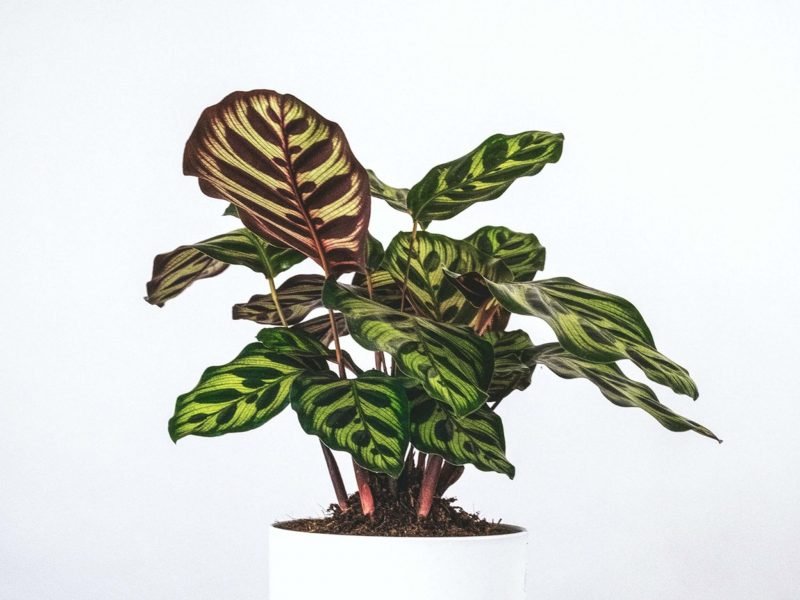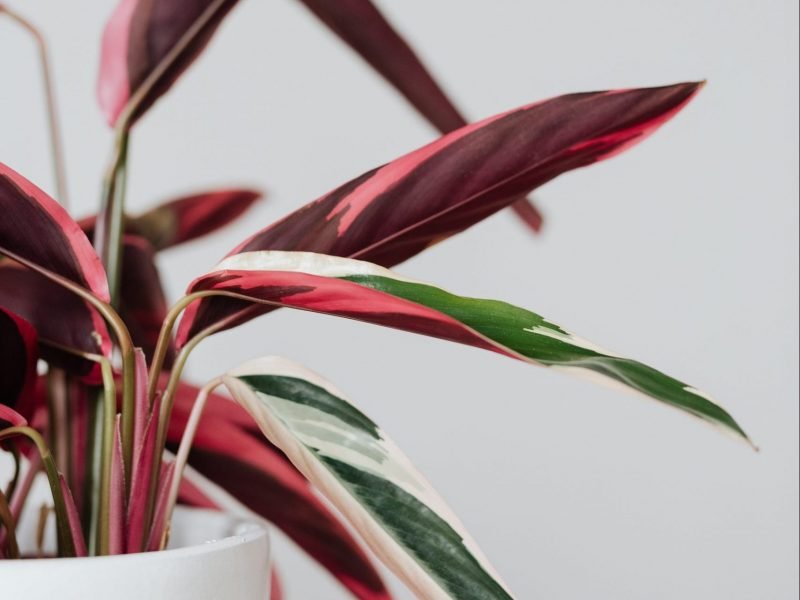
Brown leaves on a Rattlesnake Plant is not uncommon. Luckily there are only a few causes which means treating the problem becomes actually fairly easy. Below you will find the top 3 reasons why Rattlesnake Plants develop brown leaves.
Lack of humidity can cause brown leaf tips or edges
If your Rattlesnake Plant has brown and dry leaf tips or leaf edges, then humidity may be the cause. Rattlesnake Plants like relatively high humidity and will struggle in homes that have quite dry air. This problem is a lot more common in winter as heating and less ventilation can mean the air in your home dries out a lot quicker.
Here are a few ways to increase humidity for your Rattlesnake Plant:
Mist the leaves
This is one of the easiest ways to increase the humidity for your Rattlesnake Plant and avoid further brown leaves. Mist the leaves a couple times a week with a spray bottle. (We love these amber glass ones from Amazon). Never mist them in the evenings though as with the cooler temperatures at night, the leaves are a lot more likely to rot and wilt.
Build a pebble tray
This requires a little DIY but it’s a great solution for brown Rattlesnake leaves. Fill up a tray with small stones and fill it up halfway with water. Place your plant on top and slowly the water will evaporate around your plant increasing the humidity. One important thing to note with pebble trays is you never want the plant pot to reach the water as this can cause the roots to rot.
Give your plant a wash down
One simple thing that raises the humidity instantly is showering your Rattlesnake Plant. Washing it down with water also gets rid of dust and potential pests that might be on your plant. Shower your Rattlesnake Plant down with lukewarm water sp you don’t shock or burn the plant. Keep the water pressure relatively low to avoid breaking any of the leaves or stems.
Placement
If you have good lighting in your kitchen or bathroom then we recommend moving your Rattlesnake Plant in there. The humidity level in those rooms is naturally higher than in other areas of your home because of showering and cooking. Just be careful not to put your plant too close to the cooker or this will burn the leaves pretty quickly!
Buy a humidifier
These keep the humidity in the room at a consistent level so are great for keeping your humidity-loving houseplants happy and avoiding brown leaves and leaf tips. Some humidifiers even have features that mean you can put it on a repeating schedule or turn itself off once the rooms reach the desired humidity level.
We always recommend this humidifier from Amazon as a great place to start.
If you want to know more about how to raise the humidity for your Rattlesnake Plant then check out our humidity guide.
Fluoride sensitivity can also cause brown leaves
Rattlesnake plants can sometimes be sensitive when it comes to tap water. If you live in an area with hard water then it means there is a higher level of fluoride, chlorine, salts and minerals in the water. Over time this can cause your plant to develop brown leaves or leaf tips.
If you don’t want to invest in a water purifying system (we don’t blame you as they are pretty expensive) then there are two free and easy ways you can solve this problem.
Leave the water 24 hours before watering
If you leave your watering can full of water out for a full day then most of the chemicals should evaporate leaving your tap water pure.
Rainwater
Another method is to collect rainwater as the chemicals are much lower than the treated water that comes out of your tap.
It may take a little bit of time for the effects of this change to come through but it should prevent any further leaves from turning brown.
Underwatering can quickly cause brown leaves on a Rattlesnake Plant
If the leaves are turning quite brown dry and crispy but all over and not just the edges and tips then it may be due to underwatering. Rattlesnakes like to have moist soil but never soggy. This means you have to get the right balance when watering which can be difficult. We always recommend a little but often approach to avoid over or underwatering.
If you think your plant has been underwatered then check the soil before you do anything! You want to be sure that this is the cause otherwise you may very quickly be overwatering. Once you are sure that the soil is bone dry, then slowly reintroduce watering. Your first instinct might be to drown the plant in water but this can actually cause more damage and more brown leaves. This is because plants get shocked by a sudden change in environment.
Water your plant a little bit once a day for a week. After a week you want to go back to a more normal care routine, making sure to check the moisture in the soil frequently to avoid the brown leaves from developing again!
These are the main reasons why your Rattlesnake Plant has developed brown leaves. If you want to find out more about general care then check out our Rattlesnake Plant Care Guide for everything you need to know to keep your plant happy and healthy.













